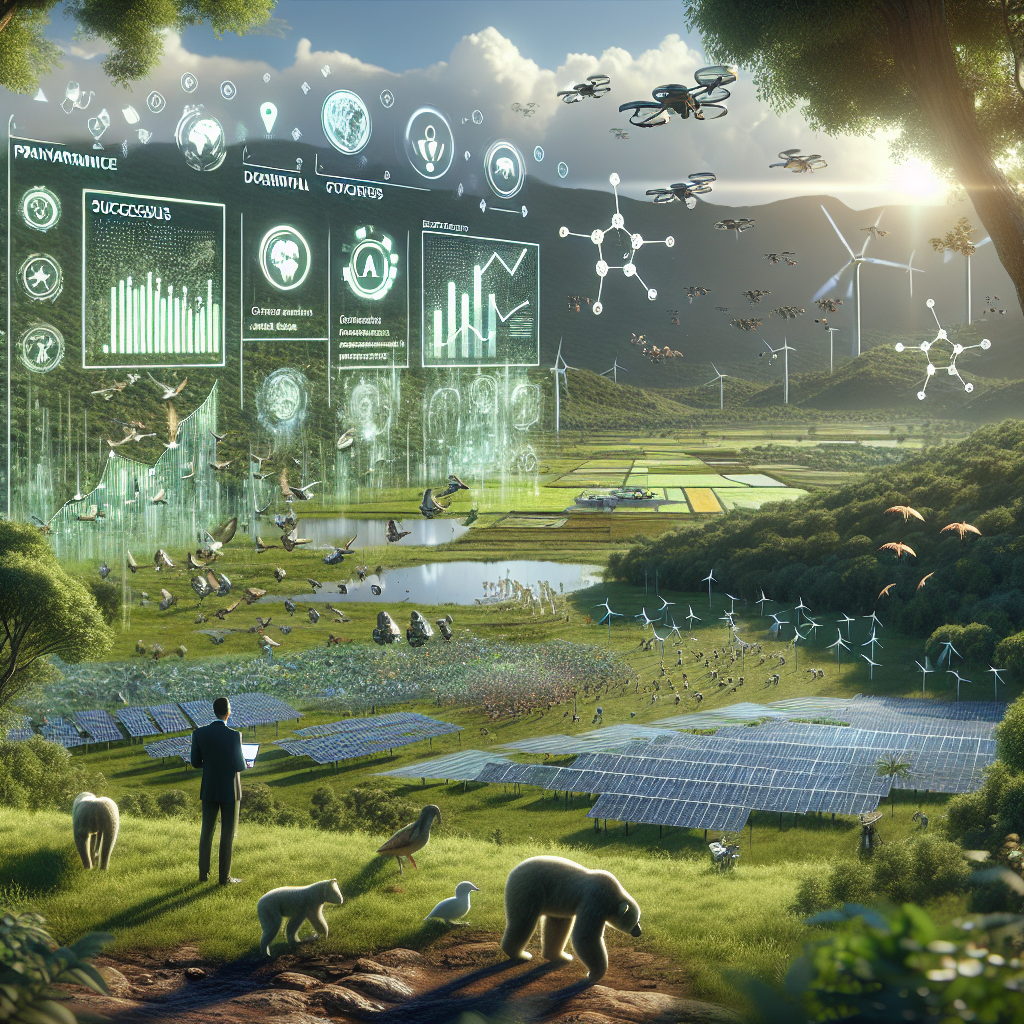AI in Environmental Conservation: Transformative Use Cases, Success Stories, and Challenges

```html
Artificial Intelligence (AI) is not just transforming industries; it's also making a substantial impact on environmental conservation efforts. By leveraging AI's advanced data processing capabilities and predictive analytics, organizations are tackling some of the planet’s most pressing environmental challenges. In this blog post, we'll explore various use cases of AI in environmental conservation, highlight success stories, and discuss challenges and lessons learned.
Wildlife Monitoring and Protection
AI is making significant strides in wildlife conservation. Tools like Wildlife Insights and PAWS (Protection Assistant for Wildlife Security) use machine learning algorithms to analyze camera trap images, automatically identifying species and poachers. This enhances the efficiency of wildlife monitoring and helps prioritize anti-poaching efforts.
However, implementing AI in wildlife protection isn't without difficulties. A conservation organization faced issues when their AI system struggled with identifying rare or less-documented species, leading to incomplete data. This highlighted the need for comprehensive training datasets and continuous updating of AI models.
Climate Change Predictions
AI is aiding scientists in predicting climate change impacts more accurately. Platforms like IBM’s Green Horizon and Google's Climate Engine use AI to analyze environmental data, offering forecasts for extreme weather events and long-term climate trends. This allows for more effective planning and mitigation strategies.
Nonetheless, climate predictions using AI pose challenges. A research group found that while AI could analyze vast datasets, its accuracy was limited by the quality and granularity of existing data. This underscored the importance of high-quality data collection and collaboration between AI developers and climate scientists.
Energy Optimization
AI is helping to optimize energy consumption and improve renewable energy integration. Companies like Gridmatics and SparkCognition deploy AI algorithms to manage energy grids more efficiently, predict energy demand, and optimize the use of renewable energy sources.
Despite its promise, AI in energy optimization faces hurdles. A utility company encountered challenges when their AI system's predictions misaligned with actual energy usage patterns, causing inefficiencies. This highlighted the need for adaptive algorithms that can learn from real-time data and adjust to changing conditions.
Water Management
AI is playing a vital role in water management. Tools like Emagin and AquaSeca use machine learning to monitor water quality, predict leaks, and optimize irrigation systems. This leads to more sustainable water usage, which is crucial in regions facing water scarcity.
However, AI-based water management isn’t without challenges. A municipality faced difficulties when their AI system failed to account for unexpected weather variations, affecting water distribution. This emphasized the importance of integrating AI with local environmental factors and human expertise.
Deforestation and Land Use Monitoring
AI is revolutionizing the fight against deforestation. Platforms like Global Forest Watch and Rainforest Connection use AI to analyze satellite imagery and acoustic data, detecting illegal logging activities and land use changes in real-time.
Challenges can arise in such applications. Conservationists found that their AI system occasionally produced false positives, mistaking natural sounds for logging activities. This highlighted the need for high accuracy levels and the importance of collaboration between AI developers and local communities.
Marine Conservation
AI is helping to protect marine ecosystems. Tools like OceanMind and Fishface use machine learning to monitor fishing activities, detect illegal fishing, and analyze ocean health. This aids in preserving marine biodiversity and ensuring sustainable fishing practices.
However, implementing AI in marine conservation presents challenges. Researchers found that AI models struggled with incomplete data due to limited coverage in remote ocean areas. This highlighted the need for extensive data collection and integration with other monitoring technologies to provide comprehensive insights.
The Future of AI in Environmental Conservation
The future of AI in environmental conservation holds immense potential. Advancements in remote sensing, AI-driven drones, and real-time analytics are anticipated to further enhance conservation efforts. AI’s capabilities in data analysis and predictive modeling will continue to drive significant innovations in protecting our planet.
To fully leverage AI’s potential, it is crucial to ensure data quality, foster interdisciplinary collaborations, and address ethical considerations. Combining human expertise with AI technology will be key to successfully implementing and scaling AI solutions for environmental conservation.
In conclusion, AI is transforming environmental conservation through wildlife monitoring, climate predictions, energy optimization, water management, deforestation monitoring, and marine conservation. Success stories from tools like PAWS and Global Forest Watch showcase AI’s transformative impact, while challenges highlight the need for continuous refinement and ethical practices. As AI technology advances, its role in protecting the environment will expand, offering new opportunities for sustainable environmental stewardship.
```



